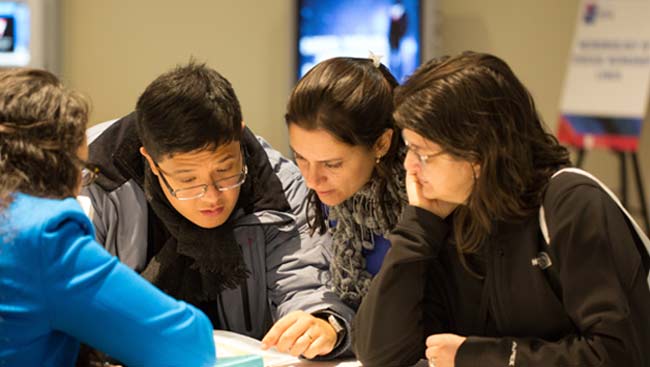
As the knowledge base in neuroscience continues to expand educators need timely resources to engage their students. Educational Resources in Neuroscience (ERIN) was a web portal developed by the Society for Neuroscience (SfN) with funding from the National Science Foundation (NSF). The database included videos, interactive quizzes, and simulators, all selected and reviewed by experts. Selected resources from ERIN can now be found on Neuronline.
Resource Highlighted: The Ascent: A Brief History of the Brain
Audience: Introductory undergraduates
Summary
This short video (3 minutes, 43 seconds) is a perfect ice-breaker for an introductory neuroscience class. Fast-paced, with eye-catching graphics and “text” bites, the video sets the stage for a deeper look at the history of neuroscience.
The video opens in the year 1600 BC with cave paintings, followed in quick succession by a list of discoveries and inventions — and the scientists behind them — that made a difference. Milestones marked include the development of the book of optics, the discovery of the compound microscope, and the discovery of the synapse.
Many scientists laid the foundation for neuroscience, and several are noted in the video. Luigi Galvani, who discovered nerve conduction; Camillo Golgi, who discovered the organelles given his name; and Charles Sherrington, the first to pinpoint the synapse, are just a few highlighted. Embedded in the show are quotes from many of these scientists, which may inspire students to conduct their own research to see what they can find out.
A good starting point
The video offers students a window into the world of neuroscience. It stops short of present-day discoveries, but that can be used to your advantage. Students can watch the video for homework and share their ideas about other discoveries to include with their friends on Twitter and Facebook.
This video is available on YouTube. When students come to class, ask them about their ideas for additions to the video. Pooling everyone’s thoughts will no doubt result in a much longer — and more comprehensive — list.





